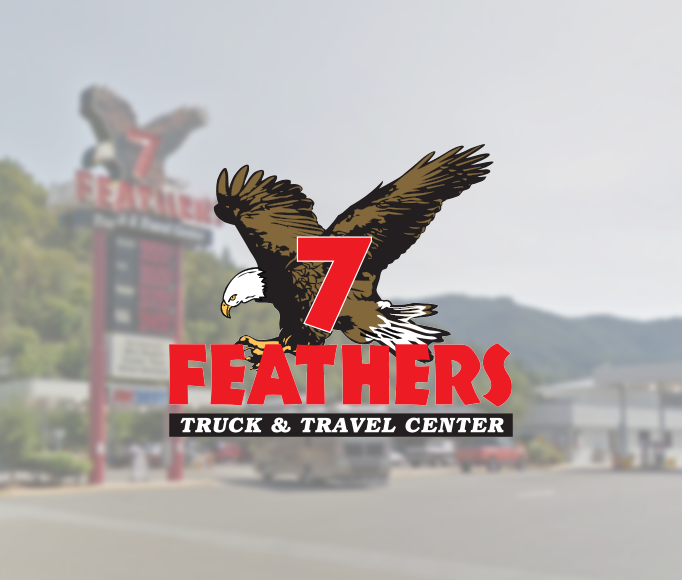Seven Feathers Casino Oregon Jobs
January 24, 2020
In 1987, the U.S. Supreme Court affirmed the authority of tribal governments to establish gaming operations independent of state regulation, provided that the state in question permits some form of gaming. Congress took up the issue of tribal gaming and conducted a series of hearings, ultimately culminating in the passage of the Indian Gaming Regulatory Act of 1988 (IGRA).
The National Indian Gaming Commission (NIGC) – www.nigc.gov – is an independent federal regulatory agency of the United States that was established pursuant to the IGRA. The NIGC website provides a list of gaming tribes and reports on tribal gaming revenue. According to the NIGC, there are eight Indian casinos operating in Oregon.
Nationally, the Indian gaming industry has grown from one that produced $5.5 billion in total revenues in 1995, to one that reached $33.7 billion in 2018. Since 2014, the Indian gaming industry has experienced 4.3 percent growth annually. The most recent Indian gaming statistics, provided by the NIGC, indicate that in 2018 there were 520 Indian gaming establishments in the United States associated with 247 tribes across 29 states.
California and Northern Nevada alone generated $9.3 billion in gaming revenues at 73 Indian gaming operations. In Alaska, Idaho, Oregon, and Washington, Indian tribes operated 55 gaming facilities and generated $3.7 billion in revenues. Nationally, tribal gaming operations with revenues in excess of $250 million accounted for 47 percent of Indian gaming revenue in 2018 but represented just 6.8 percent of gaming operations, numbering 34.
The contributions of Indian gaming to Oregon’s economy were analyzed by ECONorthwest over 2012 and 2013. According to the report, Indian tribal gaming stimulated more than $1.4 billion in total economic output statewide, supporting 11,510 jobs and $237.1 million in wages and benefits. Grants and donations from Indian tribes to local charities totaled $6.9 million in 2013.
Indian Gaming Facilities in Oregon
Each of Oregon’s nine federally recognized tribes have operated a casino. The Cow Creek Band of Umpqua Indians was the first, opening Cow Creek Indian Bingo in 1992, which was quickly expanded into Seven Feathers Casino. Five additional casinos were operating by the end of 1995:
- Wildhorse – Confederated Tribes of Umatilla
- Chinook Winds – Confederated Tribes of Siletz
- Indian Head – Confederated Tribes of Warm Springs
- The Mill – Coquille Indian Tribe
- Spirit Mountain – Confederated Tribes of the Grand Ronde

559 jobs available in Canyonville, OR. See salaries, compare reviews, easily apply, and get hired. New careers in Canyonville, OR are added daily on SimplyHired.com. The low-stress way to find your next job opportunity is on SimplyHired. There are over 559 careers in Canyonville, OR waiting for you to apply! Job Title Employer Location Salary; Ranch Hand: UIDC: Central Point, OR: Ranch Hand: Seven Feathers Casino Resort: Central Point, OR: Ranch Hand: K-Bar Ranches Corp: Central Point, OR: Ranch Hands: CANYONVIEW STAFF: Silverton, OR: Residential Associate (x2) - Columbia River Ranch RTF: ColumbiaCare Services: Boardman, OR: On Call Mental Health.


Seven Feathers Casino Oregon Jobs
In addition to the nine operating casinos, Oregon’s Indian tribal government employment is spread out across 16 counties. Casino gaming does dominate the employment profile of Indian tribal government, but there are also many other industries and activities that provide jobs.Oregon’s Indian Tribal Employment Profile
The Indian tribal government employment series dates back to 1995 when it was moved out of private and into local government ownership. In its first year, the Indian tribal government series averaged 3,200 jobs. Although a comparative employment figure for 1994 isn’t available, Indian tribal government entered 1995 with just 2,200 jobs and by December its total reached 4,200, a gain of 2,000 jobs.

Indian tribal government averaged 6,300 workers in 1998, a gain of 3,100 or nearly 100 percent over its 1995 average. And the industry continued to grow, adding 2,500 jobs to average 8,800 in 2012, an increase of nearly 40 percent.
Beginning in 2013, however, Indian tribal government pulled back, falling to 8,200 jobs in 2015 and holding steady from 2016 to 2018. Employment rose slightly in 2019, climbing by 100 jobs to average 8,300, Indian tribal government’s first gain since 2012. On the payroll side, Indian tribal government shelled out $324.4 million in 2018 wages and salaries, a new peak. On average, Indian tribal jobs paid $40,638 in 2018.
Indian tribal governments in Oregon operated 85 employer units (2019-Q1) in the 15 counties shown in the table. Public administration, which typically represents government administrative functions, provided 31 percent of the industry’s jobs.